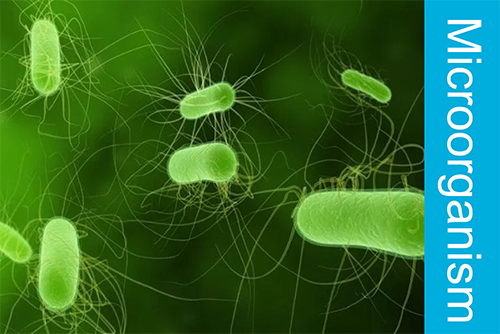
Technology
科技服务平台
Technology service platform
QKGEN® technology service platform is based on the life big data production computing platform, committed to building a new service model, its core goal is to deeply optimize the life science research system. We focus on providing efficient and reliable gene sequencing and bioinformation technology support and flexible customized services to research universities, research institutes, hospitals, pharmaceutical R&D companies and agricultural enterprises around the world. Our mission is to contribute to the continuous development and innovation of life science research by providing these professional and trusted services, and to the advancement of scientific research and healthcare worldwide. At present, QKGEN® science and technology service platform has helped more than 10 research groups achieve results transformation, cumulatively helped publish more than 20 SCI articles, and accumulated impact factor of 200 points.



Full transcriptome sequencing and analysis services
Case 1 (A Drug Sensitivity Study)
Sequencing quality control
Gene function enrichment analysis
Functional enrichment of GO, Pathway, miRNA, Disease, Proteome and Phenotype were performed on the candidate genes obtained by annotation and screening.
In enrichment analysis, Q-value of P-value is used to control FDR (False Discovery Rate). In addition, The more stringent Bonferroni multiple correction method can also be used. The default enrichment significance threshold is Q-value<0.05 for controlling FDR.
KEGG analysis(left)and GO analysis(right)
Petal map of multi-group difference analysis
eccDNA sequencing and analysis services
Case 1: Construct eccDNA profile or identify disease-related eccDNA markers
Circular DNA elements of chromosomal origin are common in healthy human somatic tissue[1]
Journal:Nature Communications
Impact factor:12.353
Publication Affiliation:Center for Genomics and Personalized Medicine Stanford University, US
Publication time:2018.3
The researchers used Circle-seq technology to sequence eccDNA in 16 muscle samples and blood samples, and detected about 1×105 specific eccDNA in 1.6×108 cells, half of which carried the whole gene or part of the gene sequence. Transcription of eccDNAs indicates that eccDNAs are present in the nucleus, and eccDNAs that appear repeatedly in multiple samples may be hot spot circular DNA. Genes rich in chromosomes can produce more eccDNA, while TTN is the most transcribed protein-coding gene in muscle cells, and TTN produces the most eccDNA in muscle cells. Thus, the somatic genome is rich in chromosomally derived eccDNA, which may influence phenotypes by altering gene copy numbers and transcribed full-length or truncated genes.
Case 2: Explore the association between eccDNA and gene expression
Circular ecDNA promotes accessible chromatin and high oncogene expression[2]
Journal:Nature
Impact factor:43.07
Publication Affiliation:University of California at San Diego, US
Publication time:2019.11
In tumors, oncogenes are often amplified in extrachromosomal DNA (ecDNA), but the structure of ecDNA and its effects on gene regulation are still limited. By integrating RNA-seq with whole genome sequencing data from cancer cell lines and clinical tumor samples of different histological types in the TCGA database, the researchers revealed that oncogenes on ecDNA are highly expressed and copied in tumors. ecDNA has greater accessibility than genomic DNA and significantly enhanced hyperremote active chromatin contact, a structure that contributes to the high expression of oncogenes.
Case 3: To explore the association between eccDNA and tumor genome rearrangement
Extrachromosomal circular DNA drives oncogenic genome remodeling in neuroblastoma[3]
Journal:Nature Genetics
Impact factor:38.32
Publication Affiliation:Memorial Sloan Kettering Cancer Center, US
Publication time:2020.1
Extrachromosomal cyclization of DNA is an important genomic feature in cancer. This paper describes the extrachromosomal circular DNA map of neuroblastoma by means of Circle-seq and whole genome sequencing, and further reveals the mechanism of extrachromosomal circular DNA in neuroblastoma. We found that extrachromosomal circular DNA is the main source of somatic rearrangement and contributes to carcinogenic remodeling through chimeric circular DNA and circular DNA reintegration into the linear genome. Cancer-causing lesions can appear outside of ECCDNA-derived rearrangements and are associated with poor clinical outcomes. It is highly likely that eccDNA derived rearrangement represents an ongoing mutagenesis process. Thus, extrachromosomal circular DNA represents a mutagenesis process with important functional and clinical implications for the origin of cancer genome remodeling. The figure illustrates the MYCN-eccDNA mediated neuroblastoma genome recombination process.
References
[1] Møller HD, Mohiyuddin M, Prada-Luengo I, Sailani MR, Halling JF, Plomgaard P, Maretty L, Hansen AJ, Snyder MP, Pilegaard H, Lam HYK, Regenberg B. Circular DNA elements of chromosomal origin are common in healthy human somatic tissue. Nat Commun. 2018 Mar 14;9(1):1069. doi: 10.1038/s41467-018-03369-8. PMID: 29540679; PMCID: PMC5852086.
[2] Wu S, Turner KM, Nguyen N, et al. Circular ecDNA promotes accessible chromatin and high oncogene expression. Nature. 2019;575(7784):699-703. doi:10.1038/s41586-019-1763-5.
[3] Koche RP, Rodriguez-Fos E, Helmsauer K, et al. Extrachromosomal circular DNA drives oncogenic genome remodeling in neuroblastoma [published correction appears in Nat Genet. 2020 Feb 27;:]. Nat Genet. 2020;52(1):29-34. doi:10.1038/s41588-019-0547-z.

Address:Room 906, Building A, No.3 Juquan Road, Huangpu District, Guangzhou
Email:hr@qk-bio.com
Tel:020-32037601

Copyright © 2023 广州齐凯基因科技有限公司 版权所有 粤ICP备2024226974号-1
技术支持-联享科技